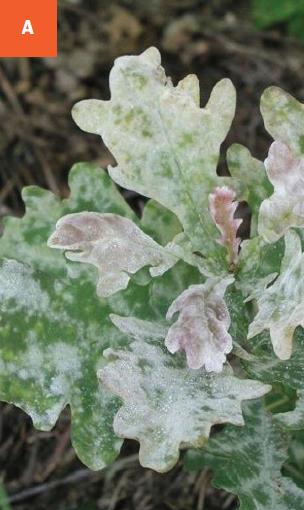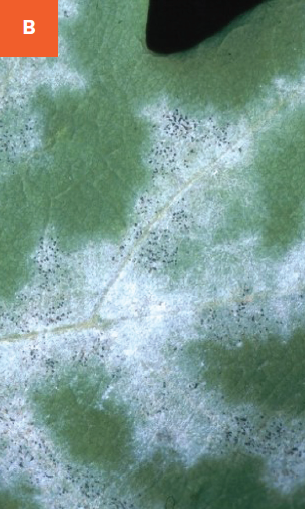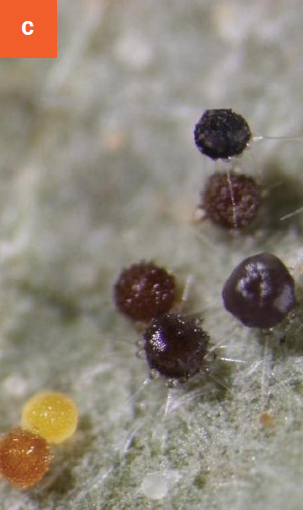Powdery Mildew
Various host-specific fungi
HOST Apple, lilac, oak, chokecherry, caragana, honeysuckle, clematis, Virginia creeper, ninebark
DAMAGE/SYMPTOMS The fungus covers buds, flowers, leaves, and fruits with a white, dusty mat. Young leaves are frequently more severely affected. Infected leaves may be distorted and yellow and may fall prematurely. In late summer, small, dark, round fruiting bodies of the fungus might be visible on the lower side of leaves. Infected fruit has a network of lines which is often referred to as russeting.
DISEASE CYCLE The fungus overwinters in buds and infected plant debris. In spring, spores germinate and invade the newly emerging leaves and flowers. Infected blossoms turn brown and shrivel. Emerging leaves are often completely covered with a white mat and appear distorted and curled. When conditions are moist, multiple cycles of infection occur. Infections of expanded leaves have round, cottony patches on the surface. Infected leaves are prematurely shed from the tree.
MANAGEMENT Plant resistant varieties. Consider healthy pruning of affected trees to promote good air circulation and light penetration. Dormant pruning of infected twigs will reduce inoculum for the next growing season but is only slightly effective. It is often not practical to prune since there are no obvious symptoms visible. Chemical control should begin when buds start to open and new inoculum is released. Fungicides containing wettable sulfur or myclobutanil provide control, but sulfur can result in leaf burn. Potassium bicarbonate products provide organic alternatives to chemical fungicides.
A Oak leaves covered with powdery mildew. B White mycelium and dark fruiting bodies (cleistothecia) on oak leaf. C Close-up of young and mature cleistothecia. D Symptom of russeting on apple fruit.




